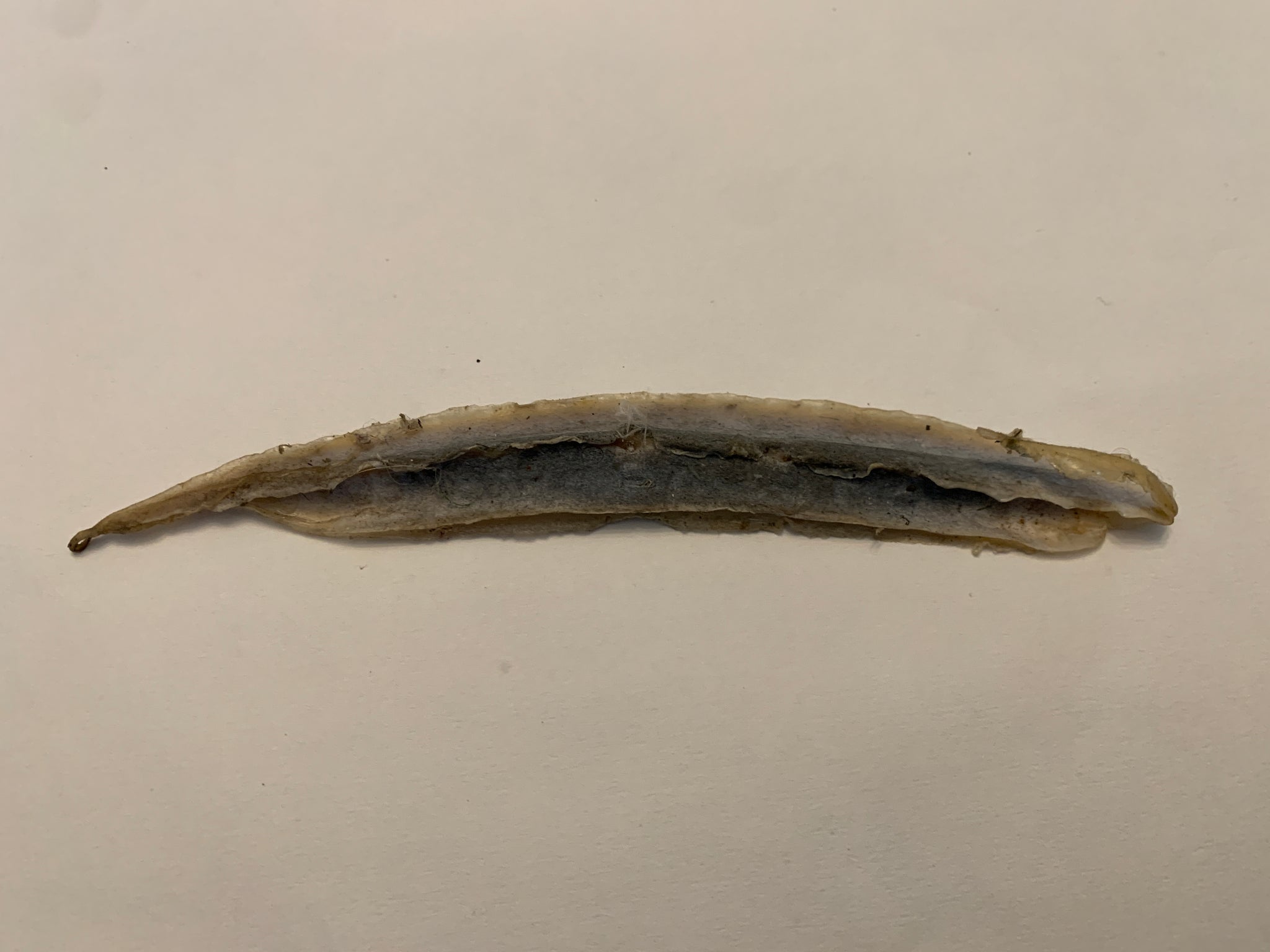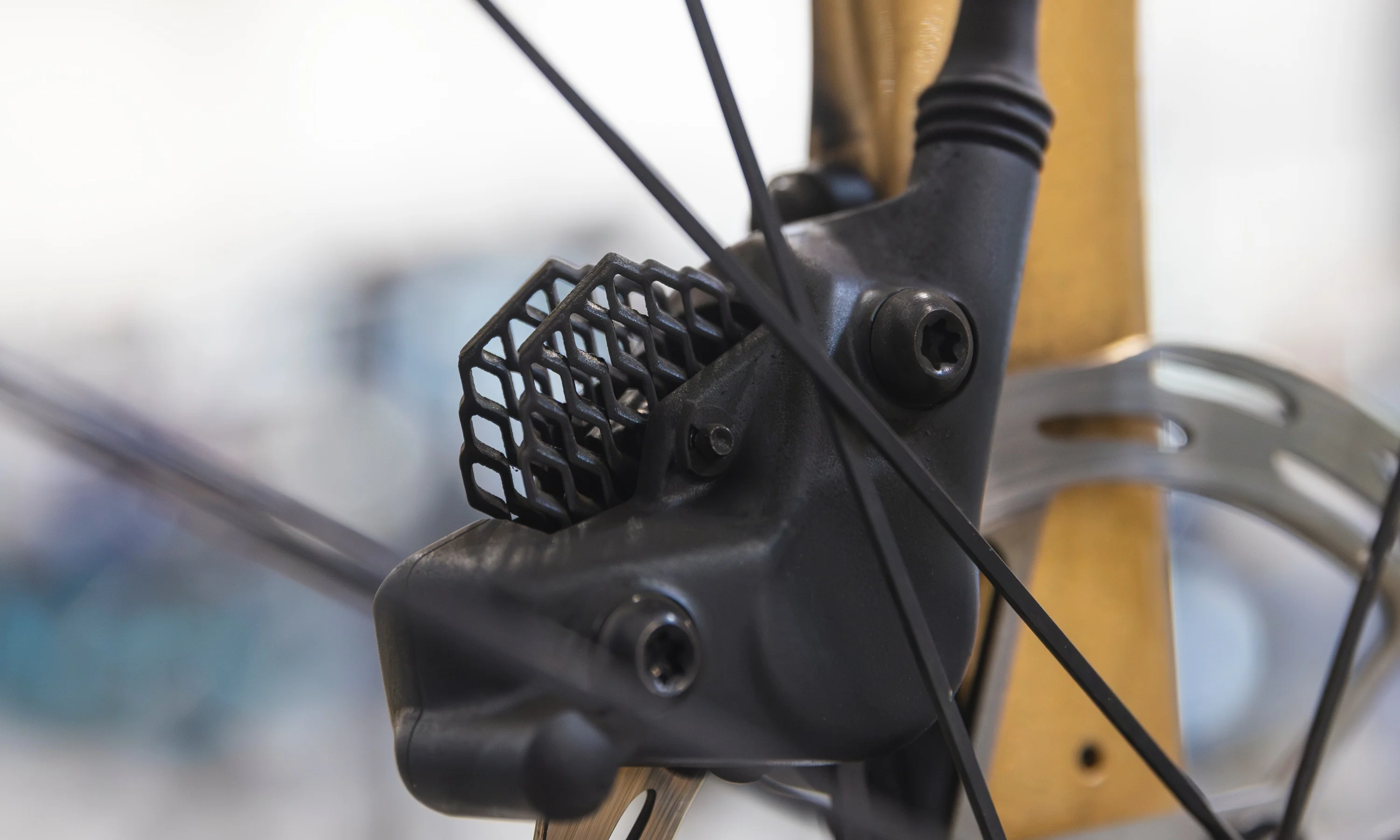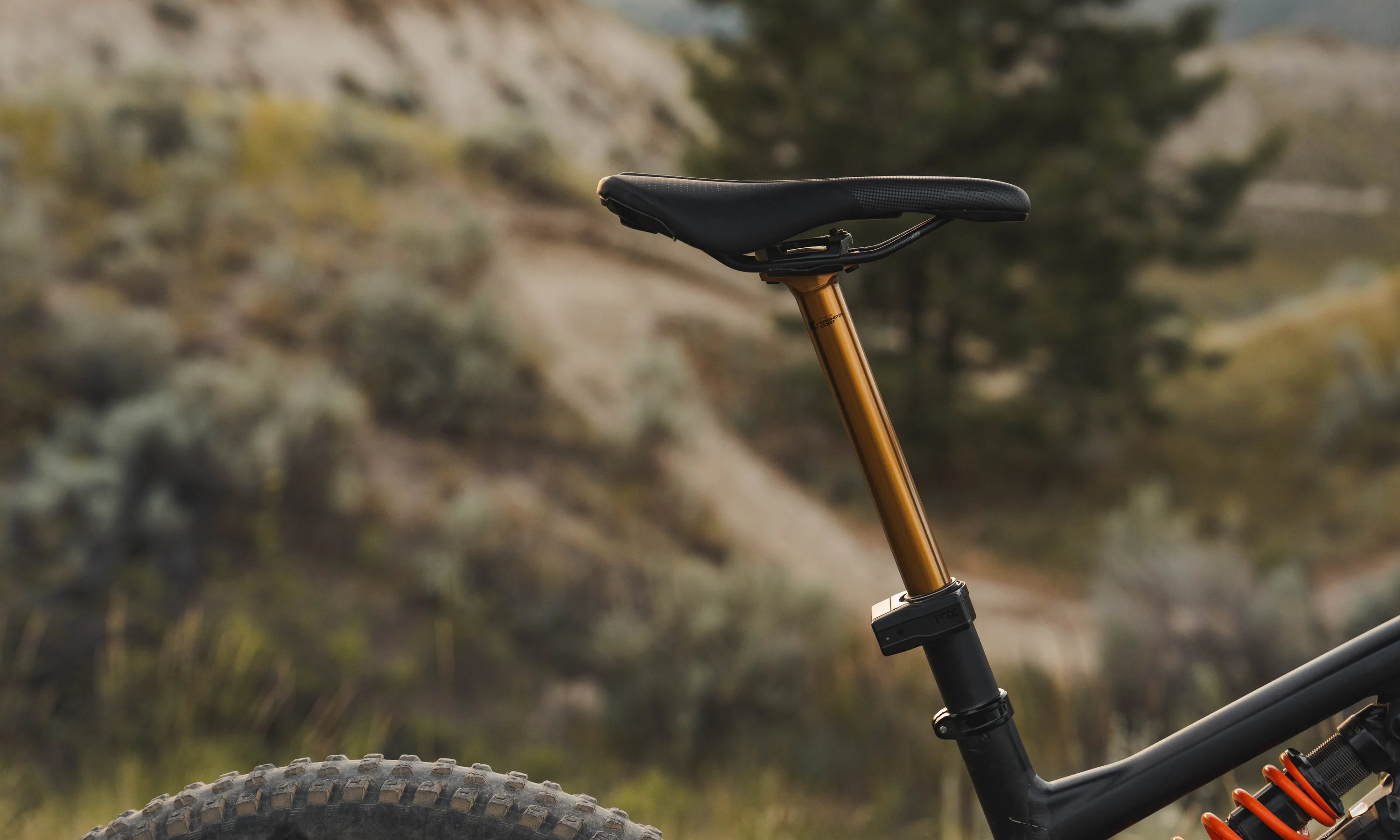No matter how much you know about bikes and gear, there’s always a bigger geek out there. For me (and nearly every other cyclist) that bigger bike geek is Josh Poertner. He spent 15 years working as Technical Director at Zipp, developing the cutting-edge aero wheels favored by world, Olympic, Ironman, and Tour de France champions.
Now, as the owner and CEO of Silca, he’s branched out into 3D printed titanium components and ultra-fast, environmentally-friendly lubes. Now, he's unveiled a groundbreaking new product: Silca Ultimate Tubeless Sealant.
This sealant uses a foaming latex formula combined with chopped carbon fibers that boosts sealing power and increases longevity. These are the sort of claims you expect from shady sealant marketers, but with someone like Poertner behind them, they’re worth a closer look.
Silca Ultimate Tubeless Sealant details
- Uses FiberFoam® Technology with a blend of 6mm, 9mm, and 12mm long carbon fibers
- Capable of sealing 6+mm holes
- 120-180 day lifespan
- Up to 1-year lifespan with Replenisher boost every 3 months
- Effective down to 10°F / -12°C
- Available in three sizes: 8 oz, 16 oz, and 32 oz
What’s wrong with regular sealant?
Nothing, except that it could be better. All sealants start as either natural or synthetic latex rubber, which is thinned with a solvent and combined with an antifreeze agent. Many companies add particles like glitter, microfiber, fiberglass, walnut shells, and cornmeal to these mixtures to slow the flow of sealant and to promote sealing at a puncture point.
When developing sealant formulas, there are trade-offs. Less solvent or antifreeze results in sealants that can seal larger holes. Orange Seal and Stan’s Race Day sealant contain a high ratio of latex to solvent/antifreeze and a high particulate concentration so they can seal holes up to 6mm. The downside is that they dry out much faster and need to be replenished every 4-6 weeks (as often as 2 weeks in hot/dry conditions). Original Stan’s sealant and Orange Seal Endurance last much longer, 4-6 months inside the tire, but sacrifice up to 50% of puncture sealing ability and aren’t capable of sealing larger holes.
Also, if you’ve ever experienced a tubeless puncture at speed, you’ve probably noticed that the puncture often continues spraying sealant as you ride. The solution is usually to stop and spin the wheel so the puncture sits at the bottom. Particles used in other sealants are too heavy and not mobile enough to migrate to the puncture while the wheel is spinning, losing you both air and time.
FiberFoam® technology
 Silca Ultimate Tubeless Sealant contains 5% by volume, 6, 9, and 12mm chopped carbon fibers which have the highest stiffness-to-weight and strength-to-weight ratio of any sealant additive. They are extremely lightweight, which means the particles are more mobile and the sealant can hold a higher fiber content than what is possible with Kevlar or fiberglass.
Silca Ultimate Tubeless Sealant contains 5% by volume, 6, 9, and 12mm chopped carbon fibers which have the highest stiffness-to-weight and strength-to-weight ratio of any sealant additive. They are extremely lightweight, which means the particles are more mobile and the sealant can hold a higher fiber content than what is possible with Kevlar or fiberglass.
 A unique foaming latex formula increases the sealant lifespan and evenly disperses the fibers throughout the sealant for maximum effectiveness. It also creates a lamination effect, where microbubbles will carry bundles of carbon fiber directly to punctures and burst to deposit multiple layers of carbon fiber over the hole. The fibers are stiff enough to immediately begin bridging and damming the puncture, sealing punctures faster and with less air pressure loss. In testing, they have successfully sealed punctures up to 7.5mm in diameter.
A unique foaming latex formula increases the sealant lifespan and evenly disperses the fibers throughout the sealant for maximum effectiveness. It also creates a lamination effect, where microbubbles will carry bundles of carbon fiber directly to punctures and burst to deposit multiple layers of carbon fiber over the hole. The fibers are stiff enough to immediately begin bridging and damming the puncture, sealing punctures faster and with less air pressure loss. In testing, they have successfully sealed punctures up to 7.5mm in diameter.
Ultimate Replenisher
 FiberFoam technology is so effective, it actually makes Silca Ultimate Tubeless Sealant impossible to pump through a tubeless valve with a syringe. It must be poured directly into the tire during installation. This is why the sealant is designed to pair with Silca Ultimate Replenisher, a version of the sealant with no carbon fiber and slightly more antifreeze so it can be pumped through the valve with a syringe. This allows users to replenish sealant without unseating the tire. Silca Ultimate Tubeless Sealant alone is formulated to last 4-6 months, but adding Replenisher every three months will extend the life of the sealant up to a full year, after which Silca recommends cleaning out the tire and refreshing it with new sealant.
FiberFoam technology is so effective, it actually makes Silca Ultimate Tubeless Sealant impossible to pump through a tubeless valve with a syringe. It must be poured directly into the tire during installation. This is why the sealant is designed to pair with Silca Ultimate Replenisher, a version of the sealant with no carbon fiber and slightly more antifreeze so it can be pumped through the valve with a syringe. This allows users to replenish sealant without unseating the tire. Silca Ultimate Tubeless Sealant alone is formulated to last 4-6 months, but adding Replenisher every three months will extend the life of the sealant up to a full year, after which Silca recommends cleaning out the tire and refreshing it with new sealant.
Environmental impact
I’ll admit I was skeptical that chopped carbon fibers could be environmentally friendly, but I was pleasantly surprised to learn about how Silca sourced and processed them. Silca is working in partnership with CFR (Carbon Fiber Recycling), the world leader in carbon fiber recycling.
 Left: Carbon fiber with epoxy and other chemical agents. | Right: the finished product, pyrolyzed carbon.
Left: Carbon fiber with epoxy and other chemical agents. | Right: the finished product, pyrolyzed carbon.
CFR produces “clean” reclaimed carbon fiber by grinding carbon bicycle frames and wheels into chips that then undergo a process called pyrolyzation. The epoxy and other chemicals in the carbon break down into methane gas, which can be recycled to heat the pyrolyzation oven, and a highly-refined petroleum by-product that CFR extracts and converts into jet fuel. The remaining “raw” carbon fiber, which is used in the sealant, is completely safe for the environment. In fact, if heated a bit further, it becomes activated charcoal, the same stuff used in air and water filters. The sealant is so effective though, very little of the carbon escapes into the environment anyway!
Silca Ultimate Sealant review
So how does Silca’s Ultimate Sealant actually perform in the real world? I’ve used it for just over 1,000 miles, and I got the chance to test out the sealant at the ultimate proving ground: Unbound Gravel. If you don’t know, Unbound Gravel is the world’s premier gravel race. It’s 200 miles long, and the rough roads and sharp flint rock are notorious for shredding tires. Despite that, I managed to make it to the finish with zero punctures. I did have one scare around 60 miles in. I heard the loud “psst” come from my rear tire and a rider behind me yelled that I had punctured. But when I looked back I saw nothing. If I did puncture, it sealed instantly with little to no air loss.
 A rough day, but free of punctures.
A rough day, but free of punctures.
Before the race, I did have an opportunity to witness Ultimate Sealant’s sealing power in action, and it was impressive. I decided to explore one of my rocky local trails on a training ride and it was way chunkier than I expected and I put a 4-5mm slash in my sidewall. In my experience, tire sealants struggle to seal this type of puncture and you either have to plug the tire or slap in a tube. I stood at the side of the trail, watching helplessly as sealant bubbled out. Then to my surprise, it stopped. The tire was soft but was holding air around 30psi — more than enough to limp home.
 A Silca Ultimate Sealant booger discovered at the site of the sidewall tear. This is what saved my ride!
A Silca Ultimate Sealant booger discovered at the site of the sidewall tear. This is what saved my ride!
After trying it for a few months, I honestly believe Silca Ultimate Sealant will seal better than any competitor (Orange Seal is my former go-to). It’s so sticky and powerful that it likes to instantly form webs between your fingers. Also, you can actually see the carbon fibers floating around in the sealant. The fibers are much bigger than glitter or any other additive I’ve seen, but it’s clear by how they float that they are extremely light and mobile.
My one knock against Ultimate Sealant is that, due to its sealing power, you have to pour it into the tire before seating the bead. I prefer injecting sealant through the valve, especially since I use CushCore tire inserts on all my bikes. But that’s a small price to pay for maximum puncture protection. Fortunately, I’ll only have to deal with that once a year since the Ultimate Replenisher is easily injectable.
One thing I’ll mention is that I think it’s a good idea to pump up your tires with the valve positioned at the top. When pumping up my tires with the valve down in the 6 o’clock position, sealant got into my valve and plugged it up. I had to remove the valve core to clean it out. Yup, this stuff just loves to plug holes.
Final thoughts
So Silca Ultimate Tubeless Sealant seals punctures better than any sealant that’s come before, can last up to a year, and uses environmentally friendly carbon fiber from recycled bikes and wheels. Even without the first two points, the environmental aspects are a good reason to switch. I also switched to Silca Super Secret chain lube after Silca made a point to eliminate PFAS and related “forever chemicals” from its lubricants. Any product that performs well and is nice to the planet is worth considering. When it’s the best I’ve ever tried — like Ultimate Tubeless Sealant is — then it’s a no-brainer.

























